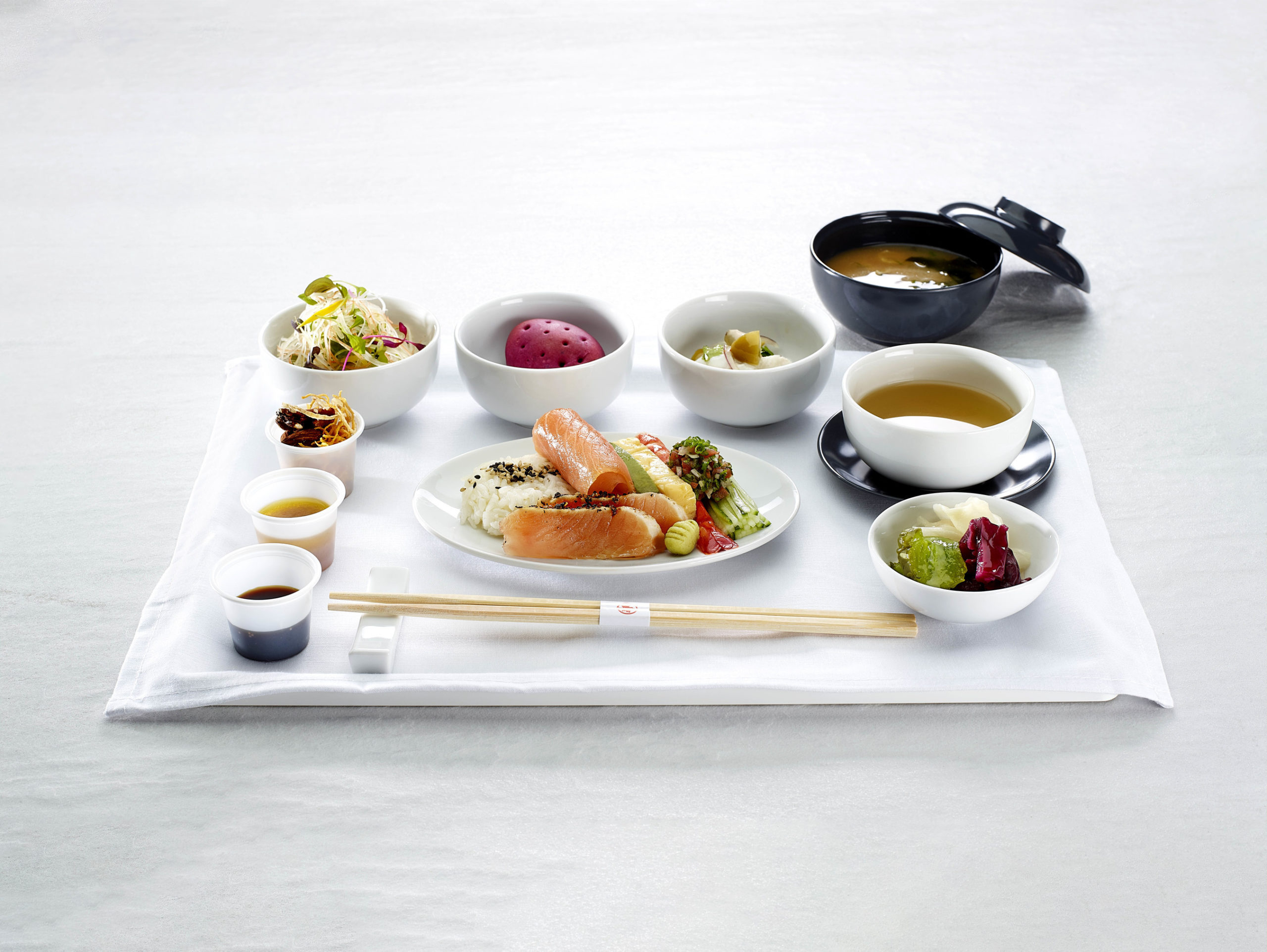Air Canada and Alaska Airlines Top Airline Food Health Rating and Earn Nods for Going Green
Share

In a tie with Air Canada, Alaska Airlines has earned top spot in this survey for the second straight year €” maintaining the streak that Virgin America held before it was acquired by the West Coast carrier. But this year veggies weren’t the only greens that earned these airlines top marks. Efforts to minimize single-use plastics were noted, too.
Air Canada and Alaska Airlines have tied for first position in a survey of airline food health ratings. The study, which has been conducted annually by nutrition and public health advocate Charles Platkin since 2009, rates the catering services of North American airlines on nutritional criteria such as calorie levels and ingredient transparency. For the first time, the investigation also evaluated sodium levels, environmental initiatives and the results from a companion Airline Water Safety survey.
In tying with Air Canada, Alaska Airlines holds on to the title for two straight years. Before that, Virgin America, which has since been acquired by the Seattle-based airline, held the title for six consecutive years, tying in 2013 and in 2017. Platkin describes Alaska Airlines as “the clear leader in making strides to minimize its environmental impact.” In 2018, it became the first to ditch single-use plastic stir straws and citrus picks, replacing them with sustainable options such as white birch and bamboo. Instead of bottled beer, the airline serves brews in aluminum cans, a lighter, easier to recycle alternative.
In September last year, the airline introduced a “Fill Before You Fly” initiative in an effort to curb plastic water bottle waste and encourage travelers to bring refillable containers. Members of the airline’s Green Team were on hand at Seattle-Tacoma International Airport handing out Alaska-branded bottles and directing travelers to filling stations. The airline also pledged to plant a tree for every passenger who posted a photo of their water bottle to social media with the required tags. Since 2010, when it began auditing recycling programs, the airline has reduced per-passenger waste going to landfills by 50 percent.

Air Canada has made strides in its environmental efforts as well. In the summer of 2019, the airline announced plans to replace plastic stir sticks with bamboo certified by the Forest Stewardship Council. The decision will divert 35 million plastic stir sticks from landfills €” enough to stretch from Halifax to Vancouver, Canada. Outer plastic packaging has also been removed from business and premium economy amenity kits, and from kids’ activity books. Starting this year, plastic packaging on headsets in economy will be replaced with biodegradable plastic.
As for its menu, an Air Canada spokesperson says that its passengers€”especially those in premium cabins€”are seeking out healthier options. Over the past few years, the airline has teamed up with a retinue of select Canadian chefs. Last summer, chef David Hawksworth added soup and salad to the Signature Class menu for North American flights. Seafood also features prominently, with Hawksworth’s tamari roasted sablefish on regular rotation and chef Antonio Park’s destination-inspired meals for Asian and South American flights.

Absent from the study’s results was mention of a “most improved airline.” Notably, there was also no trace of meat substitutes, which have been gaining traction in East Asia and Australia. After introducing the vegan, plant-based Impossible Burger in 2018, Air New Zealand added the service to several routes. Last year, Cathay Pacific became the first airline to offer a pork alternative, offering the plant-based blend with garganelli pasta in business class on select flights.
Diet Detective’s Overall 2019-2020 Health Ratings
- Air Canada, 4 Stars
Average calories overall: 347
Best bets: Liberte Greek yogurt, Avocado Smash Box, Pangoa Bowl and Campbell’s Chicken Noodle Soup
- Alaska Airlines, 4 Stars
Average calories overall: 359
Best bets: Mediterranean Tapas and Umpqua Oats Organic Apple Cranberry & Nut Oatmeal
- JetBlue Airways, 2.9 Stars
Average calories overall: 295
Best bet: Anything but the chocolate chip cookies
- Delta Air Lines, 2.9 Stars
Average calories overall: 424
Best bets: Protein Box, Almonds, and Greek Mezze Plate
- United Airlines, 2.7 Stars
Average calories overall: 320
Best bets: Beef Jerky and Hummus
- American Airlines, 2.7 Stars
Average calories overall: 481
Best bet: The Continental Breakfast with Chobani Yogurt
- Frontier Airlines, 2 Stars
Average calories overall: 289
Best bets: KIND Bar or Jack Links Beef Steak
- Allegiant Air, 1.9 Stars
Average calories overall: 325
Best bets: Hummus Snack Pack or nuts if shared
- Spirit Airlines, 1.9 Stars
Average calories overall: 360
Best bet: FlyFit Protein Mix if shared
- Hawaiian Airlines, 1.9 Stars
Average calories overall: 556
Best bet: Kitchen & Love Quinoa with Artichoke and Roasted Pepper Quick Meal
- Southwest Airlines, 1.7 Stars
Average calories overall: n/a
Best bet: Pretzels
*The 5-star “Health Score” is based on 11 criteria, with five stars being the highest score. Average calories overall represents meals, snack boxes and individual snacks.
The full results of the 2019-2020 Airline Food Investigation can be found on Dietdetective.com.


